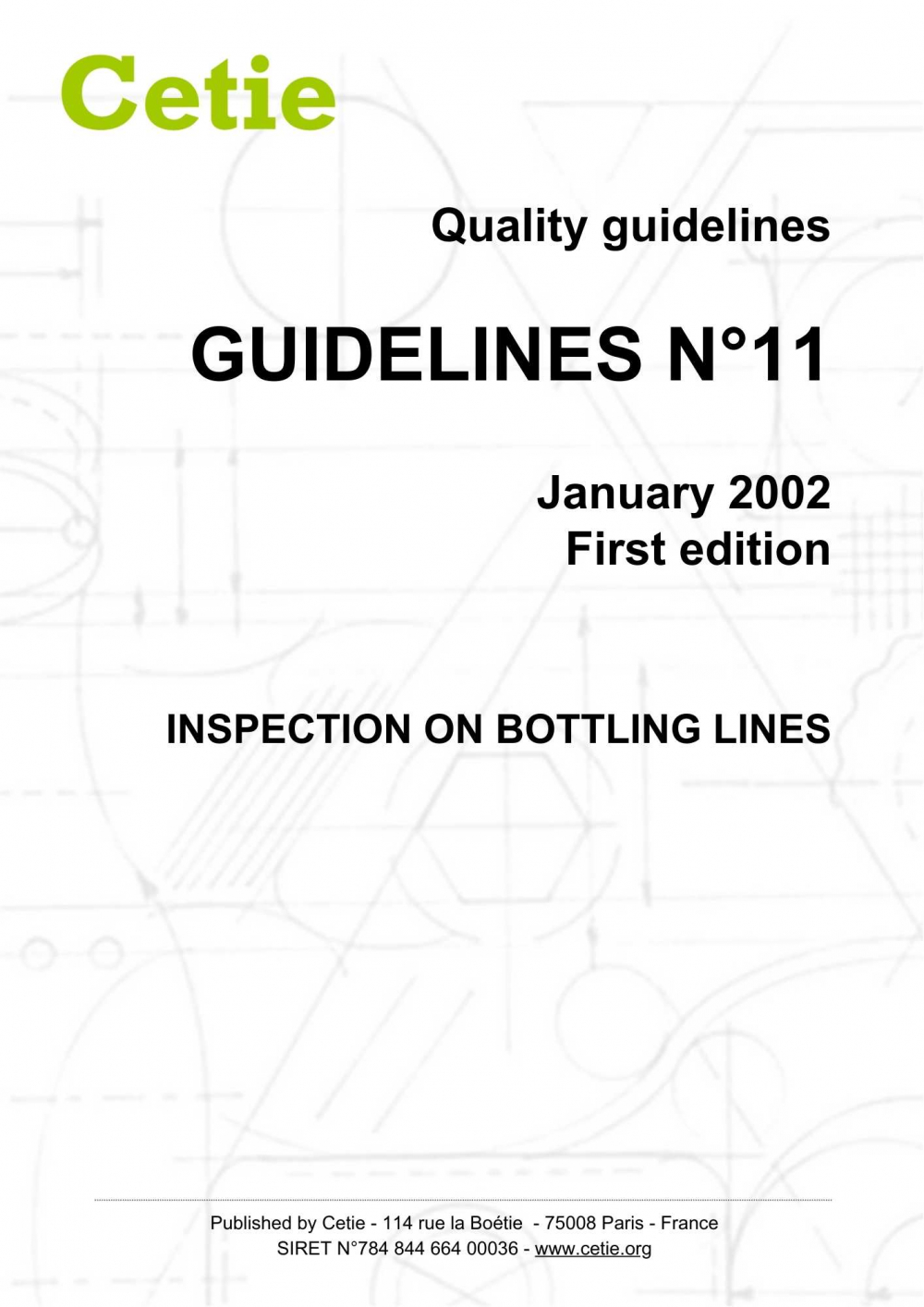Guidelines No.11
First edition
Published on: 01/01/2002
Inspection on bottling lines
Scope of application
The objective of this guideline is to suggest a rational process for establishing inspection programs to assess the quality of finished products on bottling lines.
Table of contents
Introduction
A. Objectives of online inspection
B. Basic principles
C. Responsibility for inspection
D. On-line inspection: Use of H.A.C.C.P.
A. Objectives of online inspection
B. Basic principles
C. Responsibility for inspection
D. On-line inspection: Use of H.A.C.C.P.
- Hazard analysis and critical-control points
- According to NF X06 030: 1992 & ISO 11462-1: 2001.
- According to ISO 2859 (#NF x06-021, 022 & 023 and MIL. STD 105 & 414)
H. Example of a control plan
I. Automated controls
- Relevance of automated controls
- Control of finished products
L. Appendix II: An instrument for control and measurement
- Control over instruments for control, measurement, and tests
- Calibration and control
- Checking
- Reference to ISO 9000:2000, ISO 3534-2: 1993 & ISO 2859-1995 (MIL. STD 105)
History
First edition: 01/2002
First edition: 01/2002
Contributors
BACARDI., C.I. BORDEAUX WINES, DELIFRUITS, F. ES. CORK, M.S.C, MOËT & CHANDON, SAINT GOBAIN PACKAGING, TEISSEIRE,GAI FRANCE.
Document under responsibility of working group:
Bottlers/fillers and glass manufacturers
WG chair: To be elected - -
This joint group aims to coordinate the production of documentation at the junction of the glass container production and bottling/filling. It includes good practices, the use and storage of glass containers, and quality management on bottling lines. This joint group also provides an opportunity for bottlers/fillers to open discussions on specific work items of the permanent glass groups
